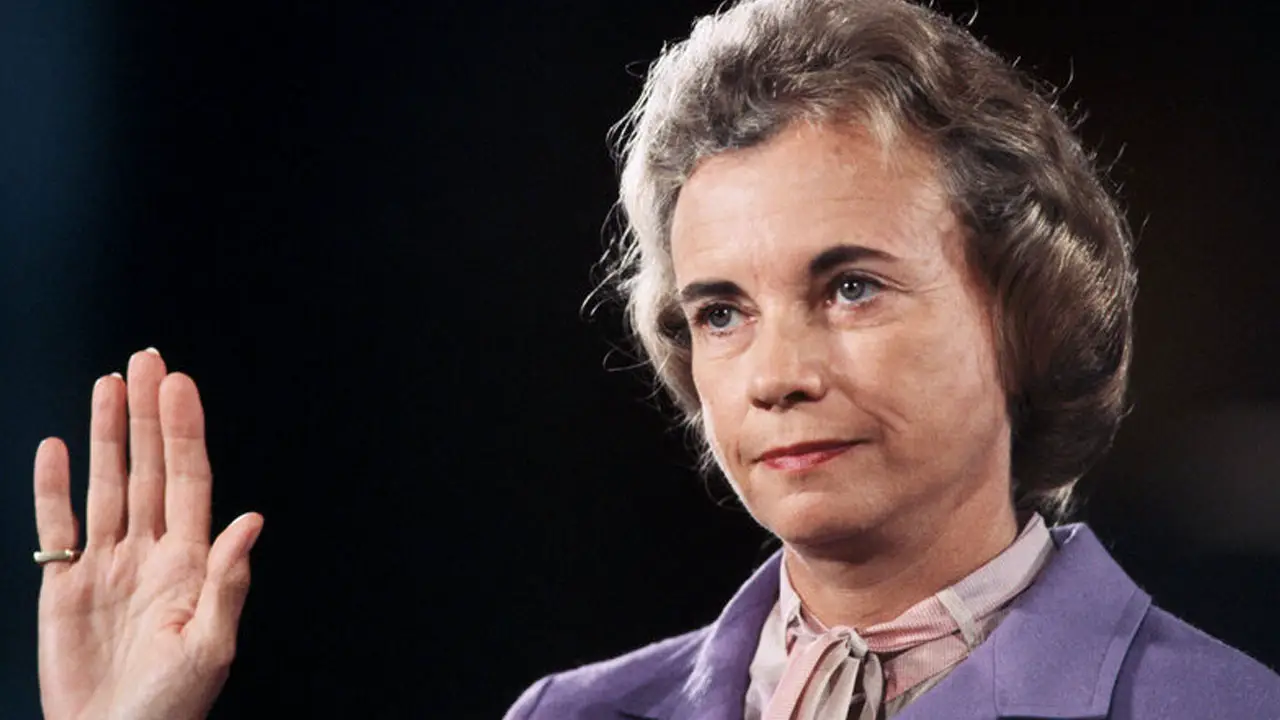Read here about Sandra Day O’Connor Wikipedia, Biography, Age, Birthplace, Career, History, religion, Family and more details.
Sandra Day O’Connor, the trailblazing figure who left an indelible mark on the U.S. Supreme Court, deserves our attention and admiration. Let’s delve into her remarkable journey, from her early career struggles to becoming the first female Supreme Court Justice. Unravel the details of her life, her significant decisions, and the enduring impact she made on American jurisprudence.
Sandra Day O’Connor Wiki

- Full Name: Sandra Day O’Connor
- Born: March 26, 1930
- Died: December 1, 2023
- Birthplace: El Paso, Texas
- Spouse: John Jay O’Connor III (1952-2009)
- Children: Scott, Brian, and Jay
- Astrological Sign: Aries
Early Life and Career Challenges
The Formative Years
Born on March 26, 1930, in El Paso, Texas, Sandra Day O’Connor faced the challenges of the legal profession’s gender bias during the 1950s. Despite limited opportunities, she persevered, working without pay to secure a foothold in her career. O’Connor’s resilience led her to become the deputy county attorney for California’s San Mateo region.
Overseas Service and Return to the U.S.
From 1954 to 1957, O’Connor served as a civilian lawyer in Frankfurt, Germany, before returning to Phoenix in 1957. Her commitment to public service continued as she became the state’s assistant attorney general from 1965 to 1969.
Political Ascension and Judicial Triumphs

From Senate to Superior Court
In 1969, Governor Jack Williams appointed O’Connor to the Arizona Senate, marking her ascent as a conservative Republican. She later ran for and won a judgeship in the Maricopa County Superior Court in 1974, solidifying her reputation for fairness and justice.
Historic Nomination to the Supreme Court
President Ronald Reagan, in 1981, nominated Sandra Day O’Connor for the U.S. Supreme Court. Her unanimous Senate approval made her the first female Supreme Court Justice, a groundbreaking moment in American history.
Judicial Legacy and Key Decisions
A Moderate Conservative Voice
O’Connor, a moderate conservative, often aligned with the Republican platform but displayed independence in her decisions. Notably, in 1982, she wrote the majority opinion in Mississippi University for Women v. Hogan, advocating for gender equality in education.
Crucial Votes and Decisive Opinions
In Planned Parenthood v. Casey (1992), O’Connor’s pivotal vote upheld Roe v. Wade, affirming abortion rights. She also played a decisive role in Bush v. Gore (2000), influencing the outcome of the contested presidential race.
Life Beyond the Bench
Post-Retirement Achievements
O’Connor’s retirement in 2006 didn’t mark the end of her contributions. She founded iCivics, an online civics education platform, and remained an influential voice in legal discourse.
Personal Challenges and Advocacy
Her marriage to John Jay O’Connor III and his battle with Alzheimer’s influenced her decision to retire. O’Connor’s openness about her health challenges, including breast cancer and dementia, showcased her resilience.
Enduring Legacy and Successors

O’Connor’s Impact on the Court
Sandra Day O’Connor’s legacy extends beyond her tenure. Her pragmatic approach and pivotal decisions continue to shape American jurisprudence.
Successors and the Ongoing Legacy
While O’Connor expressed hope for more women on the Supreme Court, her successors, including Ruth Bader Ginsburg and current Justices Sotomayor, Kagan, Barrett, and Jackson, carry on her legacy.
In conclusion, Sandra Day O’Connor’s journey from a pioneering jurist to an advocate for civic education reflects a life dedicated to the pursuit of justice and equality. Her impact on the Supreme Court and American society resonates, making her an enduring symbol of progress and change.
Read Also:

